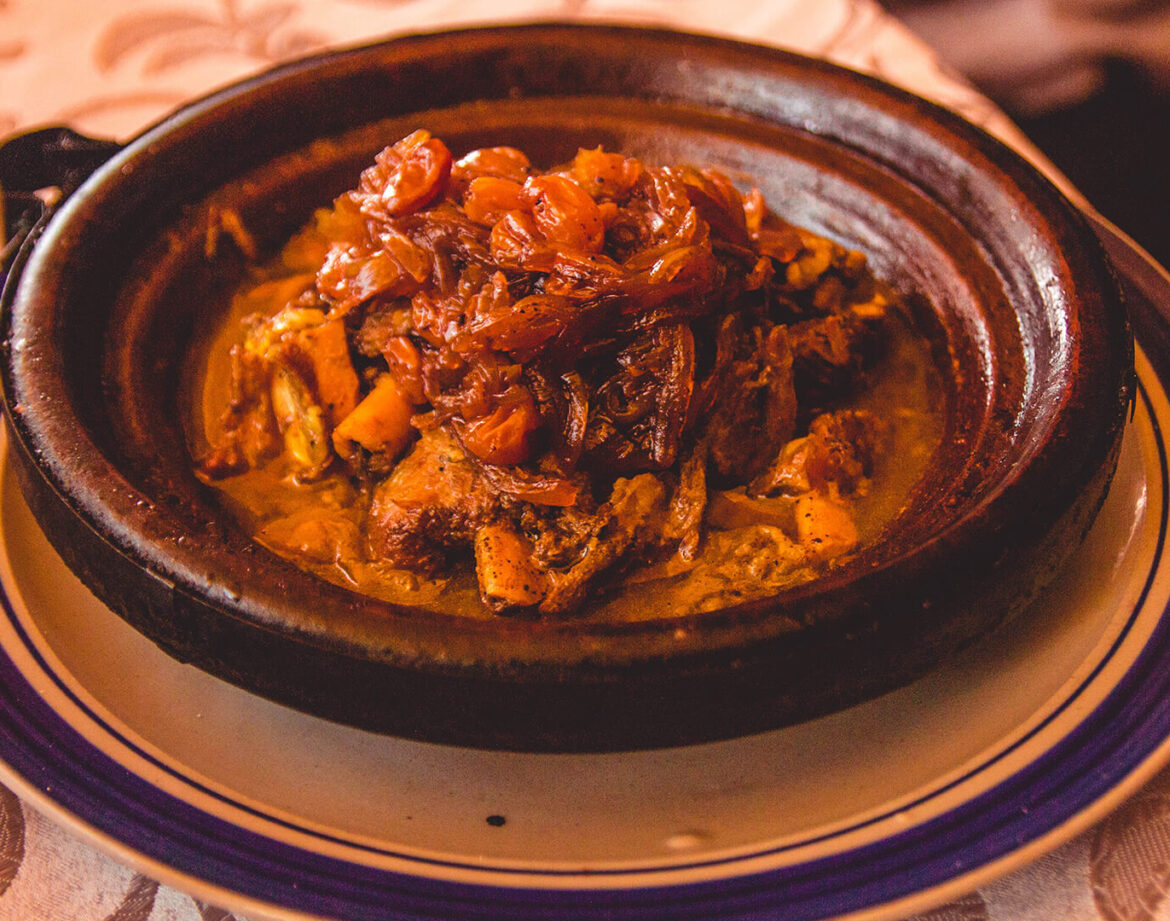Discovering Morocco’s typical dishes: a journey of flavors, spices and tradition

Moroccan cuisine is considered to be one of the best and most popular oriental cuisines, famous for its ability to combine meat, fish, legumes and fruits in dishes that enchant the palate with an explosion of delicate and spicy flavors. This culinary journey traverses iconic dishes such as couscous, tajine, and bastaila, exploring the secrets and traditions that make every meal in Morocco unique.
Couscous: a symbol of Moroccan tradition
One cannot talk about Moroccan cuisine without mentioning couscous, the most iconic and well-known dish. This staple is made of ground and steamed semolina, often served with a stew of lamb, chicken, or fish and accompanied by seasonal vegetables such as carrots, zucchini, chickpeas, and sweet potatoes.
Regional variants of couscous
In Morocco, each region has its own variation of couscous. In coastal areas, couscous is enriched with fresh fish, while in mountain areas recipes with red meat and spices such as ginger and turmeric predominate. Friday couscous is especially important: prepared as a family, it symbolizes unity and a sense of community.
La Bastaila: an elaborate Spanish-influenced treat
Bastaila (or pastilla) is one of the most elaborate and delicious dishes in Moroccan tradition. Its origins date back to the time of Islamic Spain and is characterized by the harmonious contrast between sweet and savory. Traditionally, bastaila is prepared with pigeon meat, although variations with chicken, lamb or fish are common. The filling is wrapped in thin sheets of phyllo dough, flavored with almonds, powdered sugar and cinnamon.
The preparation of the Bastaila
Preparing a bastaila requires dedication and time, as each layer of dough must be delicately overlapped to create a perfect balance of texture and flavor. It is often served as an appetizer at festive banquets and is a symbol of hospitality and refined culture.
The Tajine: stew with a unique taste
Tajine is another dish that defines Moroccan cuisine. It gets its name from the distinctive earthenware vessel with a conical lid in which it is cooked. This slow cooking method allows the ingredients to meld together, bringing out the spices and aromas in a perfect blend of flavor.
Tajine of meat, fish and vegetables
There are countless variations of tajines, from those with lamb, plums and almonds, to chicken tajines with olives and pickled lemons. There is no shortage of vegetarian versions, which enhance seasonal vegetables with the skillful use of spices such as cumin, coriander, and saffron.
La Harira: rich and nutritious soup
During the month of Ramadan, harira becomes the star of Moroccan tables. This soup is a powerhouse of energy, prepared with meat (often lamb), legumes, tomatoes and spices. It is traditionally served to break the evening fast, accompanied by dates and honey sweets.
A dish of sharing
Harira is not just food, but a time of sharing. Families gather around the table to enjoy this hot soup, symbolizing spiritual bonding and conviviality.
Moroccan bread: Batbout and other delicacies
Bread is an essential part of Moroccan cuisine. Common variations include batbout, a pan-baked bread that can be prepared in a short time and served hot. Its soft texture and slightly toasted flavor make it perfect for accompanying tagine, soups or for being stuffed with vegetables and meat.
Bread, oil and Mint Tea for breakfast
In rural areas, breakfast is often simple but delicious: a few slices of bread dipped in olive oil, accompanied by sweet mint tea. The bread can also be dipped in argan or almond oil, offering a rich and nutritious taste.
Moroccan sweets: taste and tradition
Moroccan sweets are a triumph of flavors, often enriched with honey, almonds, dates and spices. Among the most famous are chebakia, honey and sesame seed cookies, and Kaab El Ghazal, also known as “Gazelle Horns,” made with almonds, sugar, and cinnamon.
Chebakia and traditional festivals
Chebakia is especially popular during Ramadan, served with harira to break the fast. Its sweet and spicy flavors symbolize Moroccan generosity and sharing.
Mint tea: a ritual of hospitality
Every meal in Morocco begins and ends with a glass of mint tea, served hot and heavily sweetened. This rite symbolizes Moroccan hospitality and welcome. Brewed with green tea and fresh mint leaves, it is expertly poured from metal teapots, creating a distinctive foam in the glass.
The significance of tea in Moroccan culture
Mint tea accompanies conversations, celebrations and moments of relaxation. It is not just a drink, but a symbol of conviviality that transcends time and generations.
Moroccan cuisine and spices: a perfect harmony
The secret of Moroccan cuisine lies in the skillful use of spices. Ginger, turmeric, coriander, cumin, and cinnamon are just some of the spices that turn simple dishes into culinary masterpieces. Each spice tells a story, linked to the markets of Marrakech, the travels of merchants, and traditions passed down from generation to generation.
Tips for enjoying typical Moroccan dishes
If you are lucky enough to visit Morocco, do not miss the opportunity to sample local dishes in the markets and medinas. Experience street food, attend a traditional dinner in a Moroccan home
